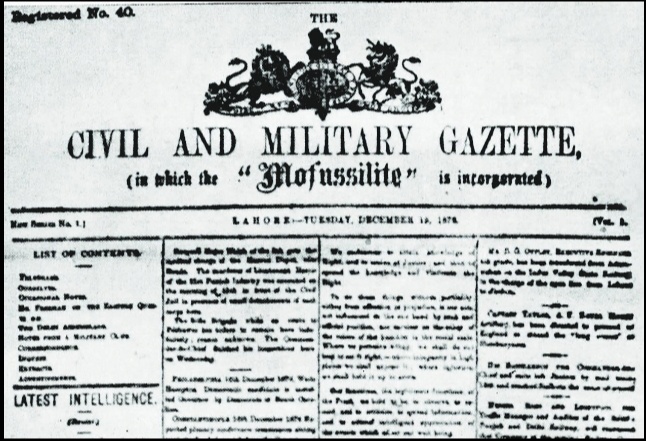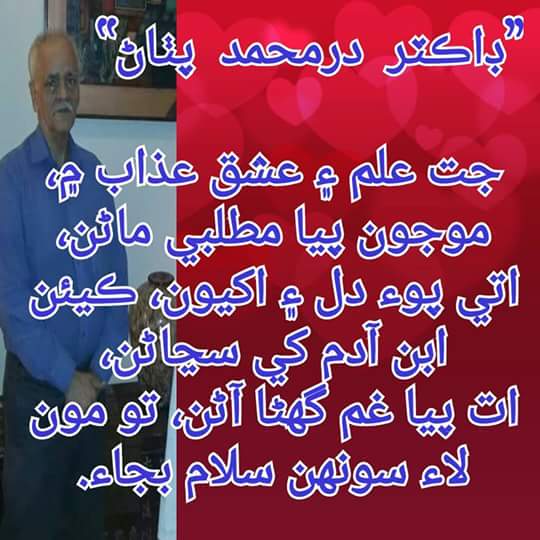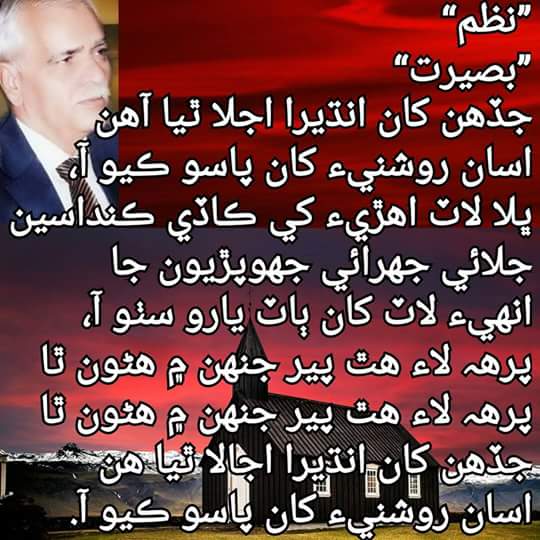
The English press in colonial India
The Civil and Military Gazette was established in Lahore and Simla in 1872 and played an important role in the development of English-language journalism in the subcontinent.
The first newspaper of the subcontinent appeared in the territories now comprising Pakistan.
S.M.A. FerozeUpdated Sep 22, 2017 03:54pm
The Civil and Military Gazette was established in Lahore and Simla in 1872 and played an important role in the development of English-language journalism in the subcontinent.
The Civil and Military Gazette was established in Lahore and Simla in 1872 and played an important role in the development of English-language journalism in the subcontinent.
In almost all parts of the British dominated India, by the middle of the 19th century, newspapers were being published in English as well as in every vernacular language of some importance. Journalism had made considerable progress in the sub-continent when the first newspaper appeared in the territories now comprising Pakistan.
The first definite step towards the establishment of a newspaper in the sub-continent seems to have been taken by William Bolts, who, in 1768, proposed to set up a printing press at Calcutta and affixed a notice on the door of the Council House announcing his intention to bring out a newspaper. But his intention was not approved by the East India Company and he was ordered to quit India for “having endeavoured to utter an odium upon the administration and promote faction and discontentment”.
First newspaper
At long last the first regular newspaper in India was started, by one James Augustus Hickey at Calcutta. It was entitled the Bengal Gazette or Calcutta General Advertiser. The first issue appeared on January 29, 1780. The paper was generally known after the name of its founder as Hickey’s Gazette.
Severe criticism published in the paper incurred the wrath of many a person who wrote to the Governor General for taking immediate action against Hickey, who was imprisoned and fined more than once. But all the hardships failed to extinguish the flame of freedom in his heart. Hickey despite all his shortcomings deserves to be remembered as the pioneer of the freedom of the Press in the Indo-Pakistan sub-continent.
The second oldest paper was the Indian Gazette which appeared in November, 1780, at Calcutta. Then followed in quick succession the Calcutta Gazette, quarto-size publication, in February, 1784; the Bengal Journal in February, 1785; the Oriental Magazine or Calcutta Amusement, the first monthly in the sub-continent, in April of the same year; and, lastly, the Calcutta Chronicle in January, 1786.
By this time, newspapers had started publishing also from other parts of the country. On October 12, 1785, appeared the Madras Courier, the first newspaper of the Madras Presidency. The weekly Madras Gazette (January, 1795) and the Indian Herald (April 2, 1795) followed it. The Bombay Presidency saw the publication of its first newspaper, the Bombay Herald, in 1789.
Next year was founded the Bombay Courier which is now represented by the Times of India. These facts provide sufficient ground to believe that newspapers were appearing from almost all parts of the British-occupied India by the end of the 18th century.
By the middle of the 19th century two provinces (Sind and the Punjab) which now have been amalgamated in the Province of West Pakistan, had been included in the British Kingdom of India. Lahore started to assume an important position culturally. When the first newspaper appeared from this town in 1849, other parts of British India had already begun to give their stray newspapers the form of an organised Press. By 1839, Calcutta had 35 newspapers (six of which were dailies), Bombay possessed 14, Madras nine and Ludhiana, Delhi and Agra, one each. Most of them were published in the English language.
The Lahore Chronicle
The first newspaper appearing in the regions which now comprise Pakistan was titled the Lahore Chronicle and it started appearing in 1849. Its promoters were high officials “whose object was to strengthen what we know as patriarchal rule”. It is stated that the Lahore Chronicle was started by Syed Muhammad Azim, father of the Punjab historian, Syed Muhammad Latif, in 1849.
The Delhi-born Syed Muhammad Azim established the Lahore Chronicle in 1849 which is believed to be the first newspaper to be published in present-day Pakistan. | Photo: Pakistan Quarterly Magazine
The Delhi-born Syed Muhammad Azim established the Lahore Chronicle in 1849 which is believed to be the first newspaper to be published in present-day Pakistan. | Photo: Pakistan Quarterly Magazine
Syed Muhammad Azim was a native of Delhi and started his journalistic career as compositor in the Delhi Gazette Press in 1830. He was soon promoted to the position of a foreman and became a skillful printer. He came over to Lahore in 1849 and started the Lahore Chronicle. In 1856, he brought out another paper, the Punjabi. It was a tri-weekly. It first appeared as an English journal, but was converted, after a few years, into a purely vernacular one, in which form it continued till 1890.
Syed Azim’s career as a journalist was long and prosperous. His enterprise as the pioneer of the press in the Punjab and his intelligent appreciation of the object and motives of the government won for him the respect of eminent men connected with the province”.
The Lahore Chronicle was in existence in 1857. When the Press Act of 1857 came into force, it became necessary for the Lahore Chronicle to get a licence. The records show that the licence was granted on December 3, 1857, on an application signed by Mr Oswald Welly, the manager, and Mr McArthy, the printer.
It has already been mentioned that the Lahore Chronicle was supported by high officials. This group was afterwards opposed by the younger civil servants who launched the Indian Public Opinion on November 16, 1866. A sharp struggle ensued between the two organs, and a year later in 1867 the Lahore Chronicle collapsed. It was then purchased by the Indian Public Opinion and absorbed into that paper.
Other early newspapers
Before proceeding with the account of the English Press in this part of the sub-continent it would be well to give a brief account of other newspapers which appeared not much later than the Lahore Chronicle. No useful material which could give some help in tracing the progress of journalism in the territories of the former provinces of Sind, NWFP, Balochistan or the present Eastern Wing of Pakistan is forthcoming.
One, therefore, finds oneself helpless in furnishing a detailed account and has to rely on what little information is available. Luckily, however, we find, it was the custom in those days, to copy news from contemporaries and quote them as the source of information. By utilising this method we come to know through the files of the Indian News and Chronicle of Eastern Affairs of London (1848-50) and the Lahore Chronicle (1857) that the following newspapers existed in the above named territories of present day Pakistan and that they appeared during the year 1850 or afterwards: Kurrachee Advertiser (1850), Sindian, Sind Kossid and Scind were published from the former province of Sind; Dacca News (1850) came out from East Bengal, while the provinces of the NWFP and Balochistan had no English newspaper.
The Civil and Military Gazette
Although during the sixties of the 19th century a number of somewhat outstanding newspapers appeared from Karachi, yet the year 1872 was a turning point in the history of English journalism in this region, for in that year was founded the first great English newspaper, the Civil and Military Gazette, which in the coming years played an important role in the development of English journalism in the Indo-Pakistan subcontinent. As a matter of fact the history of the Civil and Military Gazette is the history of the evolution of English journalism in the region now known as Pakistan.
John Lockwood Kipling (left), curator of Lahore Museum, secured a job for his son, the well-known author Rudyard Kipling (right) in 1882, as assistant editor at the Civil and Military Gazette, a position he held for five years.
John Lockwood Kipling (left), curator of Lahore Museum, secured a job for his son, the well-known author Rudyard Kipling (right) in 1882, as assistant editor at the Civil and Military Gazette, a position he held for five years.
The Civil and Military Gazette was first established as a weekly at Simla in 1872 and was then printed on royal-quarto size. When the government offices shifted to Calcutta during the winter, the paper was published from Calcutta. Its main object was to cover the activities of the central government; and it, therefore, had to follow the government offices wherever they went. In 1876, the proprietors of the Civil and Military Gazette acquired the “Mofussilite” of Agra, the joint publication was then issued from Lahore as a daily. It continued to pursue the policy which it had set forth in its issue of February 1, 1873, which opens with the following operative sentence:
“The object of the Civil and Military Gazette is to make the Civil and Military Gazette a faithful and conscientious advocate of the true interests of the services, civil and military, in India, watching all that affects those interests for good or evil…”
The Civil and Military Gazette continued till 1947 to give a lead in the adoption of many journalistic innovations which our English Press has incorporated.
The Tribune
A few years after the appearance of the Civil and Military Gazette at Lahore, appeared the well-known English newspaper of the British Punjab, the Tribune. Its first issue appeared on February 1, 1881. The paper was started as an Anglo-vernacular bi-weekly, but it later abandoned the vernacular edition and became a purely English journal. In the foundation of the Tribune considerable inspiration and assistance was given by Sir Surendranath Banerji, who was an intimate friend of the founder of the paper, Sirdar Dayal Singh Majithia.
On January 1, 1906, the Tribune was converted into a daily newspaper. The treatment of news received greater attention and as an organ of the public opinion it gained in prestige and influence. From the 1920s onward, considerable improvements were made in the production of the paper. By the year 1945-46 its circulation had risen to 26,500 copies a day, the largest circulation ever enjoyed by an English newspaper in this part of the Indo-Pakistan sub-continent.
The Punjab Observer
The Punjab Observer was founded in the years 1893-94. It was owned by a wealthy Muslim of Ludhiana, Khwaja Ahmad Shah. It was an Anglo-vernacular bi-weekly, having a circulation of 1,200 copies per issue in 1897.
The prominent figure of the Urdu literature, the late Sir Abdul Qadir, held the post of its editor from 1898 to 1904. The paper published frequently articles contributed by the late Mian Fazl-i-Husain who later also edited the paper for some days. It continued to appear till 1918.
The Muslim Outlook
The Muslim Outlook was started as a daily in 1922. This was the first daily English newspaper ever owned by a Muslim and was brought out with the object of voicing the feelings of the Muslims in North-Western India. In the first year of its publication the paper enjoyed a circulation of 1,800 copies a day.
The Muslim Outlook was a champion of the Pan-Islamic movement and was a modern paper in every sense. The display of news was quite up-to-date with two to five-decker head-lines set in different varieties of type. When the paper ceased its publication in 1932, its circulation had risen to 2, 260.
The Eastern Times
In 1931 appeared another Muslim daily in English, the Eastern Times. It was started by Ferozsons, a Lahore publishing house, and was edited in the beginning by the late Abdulla Yusaf Ali. It is recorded in the book on Mian Fazl-i-Husain by its author that the Eastern Times was the only newspaper in the Punjab which held high the cause of the Unionist Party and supported it fervently and, in return, received regular annual subsidy from the said Party.
After the death of Mian Fazil-i-Husain, the paper saw its decline as a daily, and was converted into a weekly in which form it continued to appear till 1940 when it again assumed the status of a daily after changing its ownership. The Eastern Times was finally closed down in November, 1947.
The Hindu Herald
The “Hindu Herald” was an English daily which existed between the years 1926-31. Later it became a bi-lingual paper appearing in English and Hindi. In the beginning it was a moderate paper, but later it grew into an advocate of Hindu communalism. Its circulation ranged between 1,600 and 6,000 copies a day, during its five years’ existence.
The Daily Gazette of Sind
In 1915, the name of The Civil and Military Gazette was changed to The Daily Gazette.
In 1915, the name of The Civil and Military Gazette was changed to The Daily Gazette.
Sind was captured by the British forces before their occupation of the Punjab, but it appears that no part of modern Western Pakistan, except the Punjab, had a newspaper before 1850. A Gazetteer of the Province of Sind states that a newspaper called Sindian was the first to appear in Sind. But reference to the file of the Indian News and the Chronicle of Eastern Affairs, London, makes one believe that a newspaper called Kurrachee Advertiser existed in 1850. The total number of publications in Sind in 1876 was 13, nine of which were in English.
It may be pointed out here that in 1861 the only English paper published at Karachi was Our Paper. However, later in 1879 when a share-holder of the Lahore Civil and Military Gazette, Colonel Corey, visited Karachi, he made arrangements to bring out a Karachi edition of the paper. But this arrangement could not continue long and only after five years, in 1883, Colonel Corey severed his relations with the Lahore office and carried on the Karachi paper under the title of the Sind Gazette, which continued to appear till 1912.
The year 1886, however, was a turning point in the history of the Sind Gazette for then Sir Montague acquired an interest in the company and began to take an active part in its affairs. At his instance the Sind Gazette was converted into a daily in 1904. In 1915, the paper’s title was changed to the Daily Gazette and it first appeared with this name on July 1 of that year. The Daily Gazette continued to appear till 1938.
In 1940, Haji Abdullah Haroon and Mr N.E. Dinshaw were appointed its liquidators and subsequently the latter acquired this concern. Early in 1948, the Daily Gazette was purchased by the Dalmia Jain Charity Trust, but it could not become popular and somehow maintained its existence till January, 1949, when it was again taken over by the Civil and Military Gazette of Lahore and published as a Karachi edition of the Lahore paper, but this venture could not last long.
The Sind Observer
The Sind Observer was established in 1911 and ceased publication in 1953.
The Sind Observer was established in 1911 and ceased publication in 1953.
The Sind Observer was established in 1911 and was appearing as a bi-weekly in 1919. It was converted into a daily afterwards and played a leading role in representing the Muslim cause in the province of Sind during the Pakistan movement. The paper could never attain the position of a first-rank publication and remained in existence just because it was the only paper run by a Muslim concern. When Dawn, chief spokesman of the All-India Muslim League, shifted its head-quarters to Karachi after the establishment of Pakistan, the Sind Observer was hit hard, and had to be stopped in May, 1953.
The Urdu press has always been the strongest of all vernacular presses in the former province of the NWFP (now Khyber Pakhtunkhwa). Among the English newspapers, the Khyber Mail was, and continues to be, the most prominent. It started in 1932 as a weekly and converted into a daily in 1950. Other less important English newspapers which existed for a smaller duration are the Frontier Mail and the Frontier Gazette.
In the end, it will suffice to say that about 125 English newspapers and journals are being published in Pakistan in 1957, of which Pakistan Times, Dawn, and Times of Karachi in West Pakistan, and Morning News, Pakistan Observer and Pakistan Post in East Pakistan are the most outstanding.
Excerpted from the Winter, 1957 edition of ‘Pakistan Quarterly’.
This story is part of a series of 16 special reports under the banner of ‘70 years of Pakistan and Dawn’. Read the report here.



